Amtrak has honored past passenger trains over the years by inheriting their names. How many are in service today and how close — or far — do they follow the original routes?
Auto Train
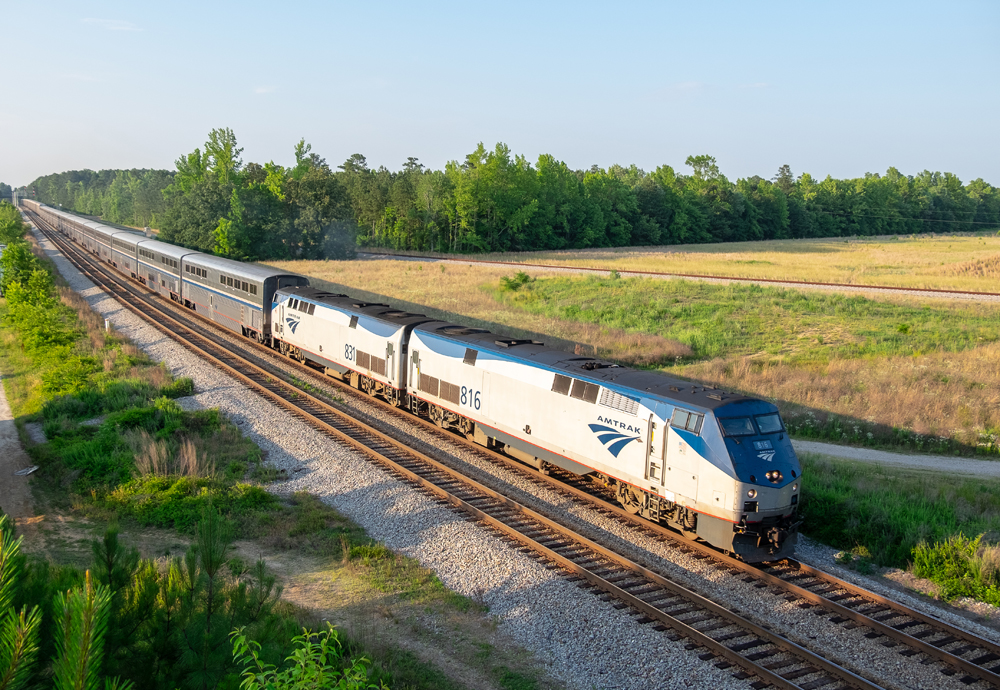
Eugene K. Garfield’s Auto-Train carried passengers and their automobiles over the former Richmond, Fredericksburg & Potomac and Seaboard Coast Line railroads – nonstop overnight between Lorton, Va., and Sanford, Fla. The privately run train successfully demonstrated the concept, but was plagued with poor business decisions, high operating costs, increasing mechanical failures, and several damaging derailments during its 1971-1981 lifespan.
Amtrak’s incoming president in 1982, W. Graham Claytor Jr., saw potential and made the move to acquire the defunct company’s stations and assets. The descriptive name also survived — minus the hyphen. Beginning in October 1983, Amtrak’s Auto Train never looked back as it provides the same service and routing, now mostly owned by CSX Transportation, with flourishing results.
Learn more about the Auto Train in Trains’ Jan. 2013 issue.
California Zephyr
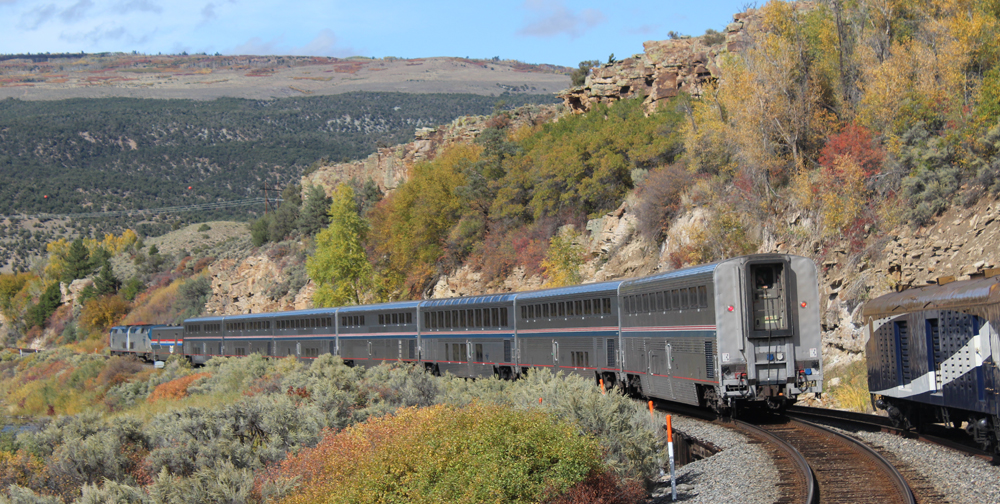
Beginning in 1949, the Chicago-Oakland, Calif., California Zephyr was touted as the “most talked-about train in America” with its stainless-steel cars traversing the Rocky Mountains and Sierra Nevada on a daylight schedule. Service ended on the train’s original Western Pacific, Denver & Rio Grande Western, and Chicago, Burlington & Quincy route in 1970 when the WP opted out of the partnership. Rather than join Amtrak the following year, the Rio Grande continued use of Zephyr equipment between Denver and Ogden, Utah, as the Rio Grande Zephyr.
Forced to route its own Chicago-Oakland train onto the Union Pacific’s Overland Route, Amtrak named it the San Francisco Zephyr. The D&RGW eventually relinquished service and joined Amtrak in 1983, thus restoring the California Zephyr name on the original “Through the Rockies-Not Around Them” route. Today’s incarnation by the passenger rail carrier operates west of Salt Lake City over UP’s former Southern Pacific tracks.
Learn more about the California Zephyr in Trains’ April 2024 issue.
City of New Orleans
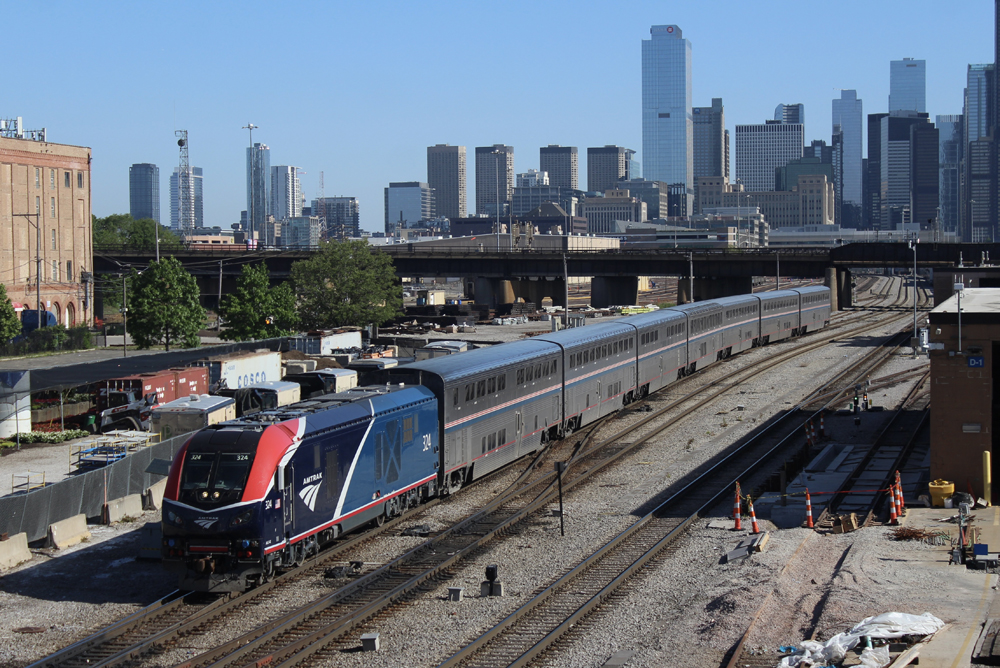
Illinois Central inaugurated this streamlined speedster of coach and parlor cars between Chicago and New Orleans in 1947. Along with the IC’s overnight Panama Limited, it survived until Amtrak took over on May 1, 1971. At first, only this dawn-to-midnight daytime run and City of New Orleans name were retained. But Amtrak flipped to the Panama Limited’s schedule and moniker on Nov. 14, 1971, due in part to slower track conditions and the City’s involvement in the company’s first fatal accident that June.
Chicago folk singer Steve Goodman’s “City of New Orleans” then became a hit for Arlo Guthrie in 1972. But it wouldn’t be until 1981 when Amtrak revived the name for its Chicago-New Orleans service to coincide the promotional opportunity with the carrier’s tenth anniversary. Though now terminating at Chicago’s Union Station instead of Central Station, today’s City of New Orleans retraces its predecessor’s routing that is now part of Canadian National Railway, except between Memphis and Jackson, Miss.
Crescent
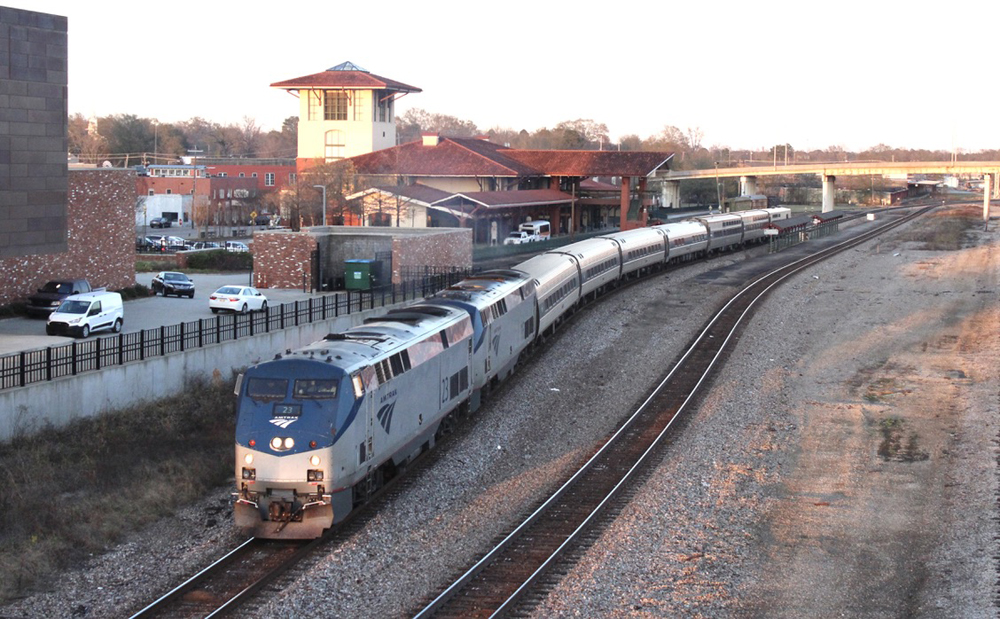
The Southern Railway‘s New York-New Orleans Crescent Limited debuted in 1925 on a route through Atlanta, Montgomery and Mobile, Ala., in conjunction with three other railroads south of the Georgia capital. It was always billed as a luxury train and remained all-Pullman through the postwar era, at least on the Southern’s portion of the route until 1968. Renamed the Southern Crescent a few years later when shifted to an all-Southern route through Birmingham, Ala., the railroad only allowed Amtrak to handle its illustrious flagship north of Washington, D.C. until 1979. The train name was then shortened to Crescent shortly after Amtrak fully assumed operations between the Big Apple and Big Easy.
Empire Builder
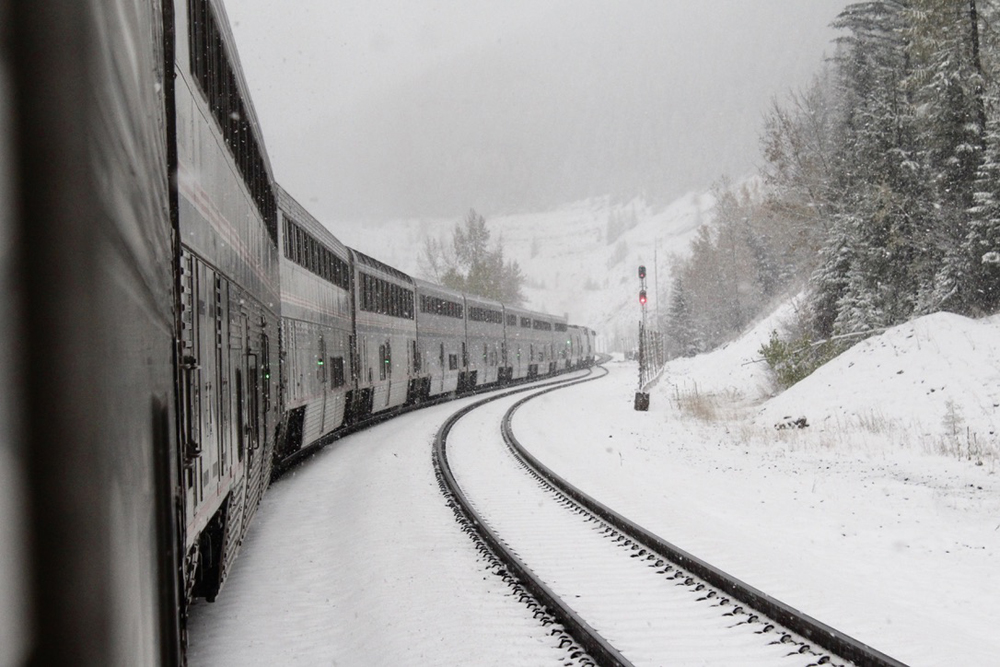
Christened Empire Builder in 1929 to honor Great Northern Railway founder James J. Hill, what became the railroad’s premier Chicago-Pacific Northwest streamliner continued as a Burlington Northern train between the Windy City and Seattle/Portland, Ore., with the 1970 merger of four railroads. Amtrak opted to retain the Builder and its name as a part of its national system following the May 1, 1971 formation, but shifted the Chicago-Twin Cities portion from the former Burlington Route to what was then the Milwaukee Road (now CPKC). West of St. Paul, today’s train continues to split into the Seattle and Portland sections at Spokane, Wash., but deviates from its original route between St. Paul and Minot, N.D., by operating over BNSF Railway tracks that once hosted the Northern Pacific’s North Coast Limited in Minnesota and GN’s Dakotan in North Dakota.
Lake Shore Limited
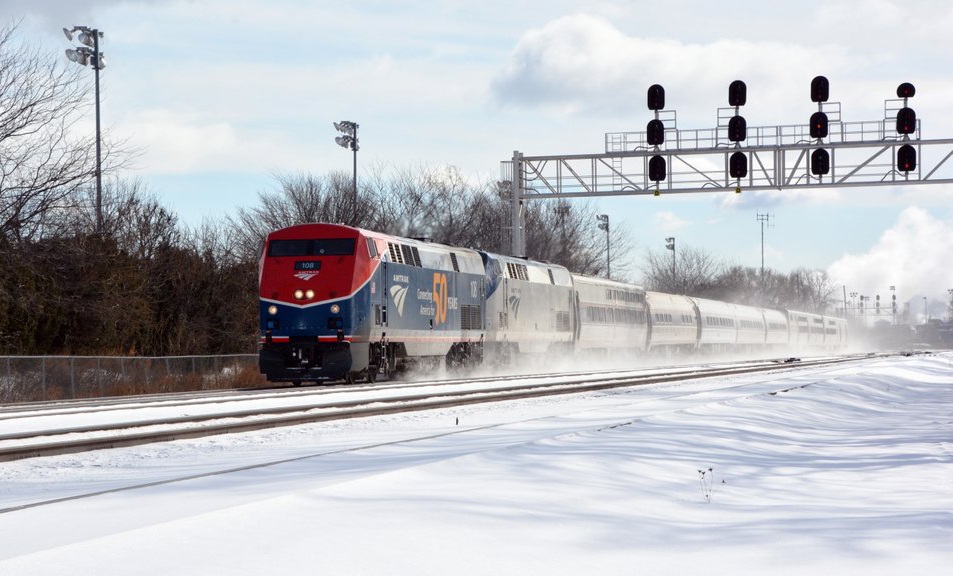
Before there was the famed 20th Century Limited, the Lake Shore Limited debuted in 1897 as a headliner for the New York Central System with all-sleeping and parlor cars to Chicago from New York and Boston. The train name disappeared from timetables in the 1960s. Initially, Amtrak’s national system did not include any through trains on the route, though the carrier initiated a train named Lake Shore on May 10, 1971, with the understanding that states would contribute financially. When that funding failed to materialize, Amtrak dropped it on January 6, 1972. It wasn’t until 1975 that both route and name reverted back to the original service – minus station switches at New York, Chicago, and other stops along the route now hosted by CSX and Norfolk Southern Corp.
Learn more about the Lake Shore Limited in Trains’ Feb. 2024 issue.
Maple Leaf
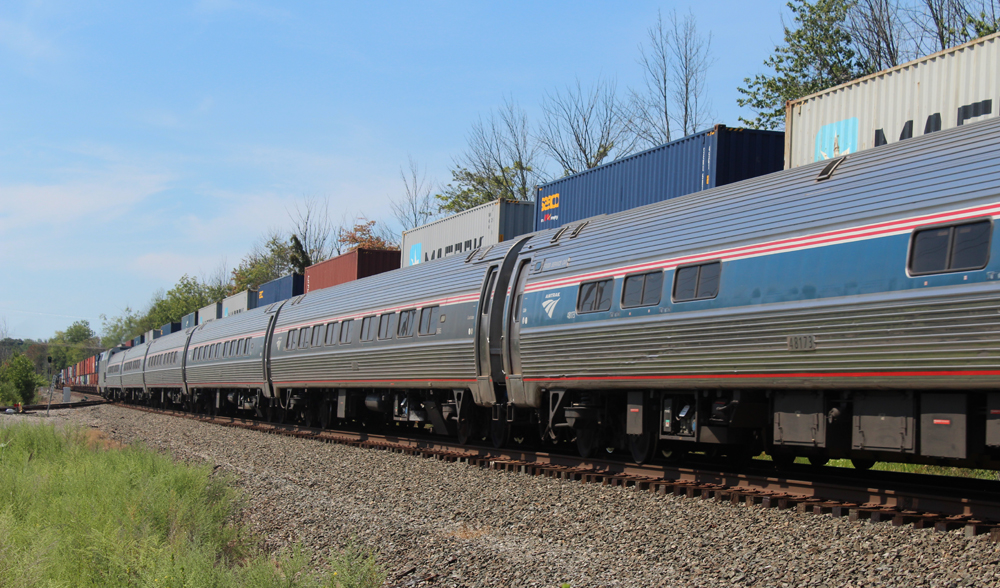
Pre-Amtrak, several railroads featured passenger trains to Canada named Maple Leaf. A Chicago-Toronto all-day run operated over affiliated Grand Trunk Western and Canadian National that wasn’t picked up at the carrier’s inception. Until the early 1960s, a New York-Toronto Lehigh Valley Railroad-CN overnight Maple Leaf ran on LV’s route through New Jersey, Pennsylvania, and central New York State. The latter comes close as a true predecessor to Amtrak’s Maple Leaf, a joint daytime operation with VIA Rail Canada, launched in 1981, that follows the Lake Shore Limited’s route as far as Buffalo, N.Y.
Pere Marquette
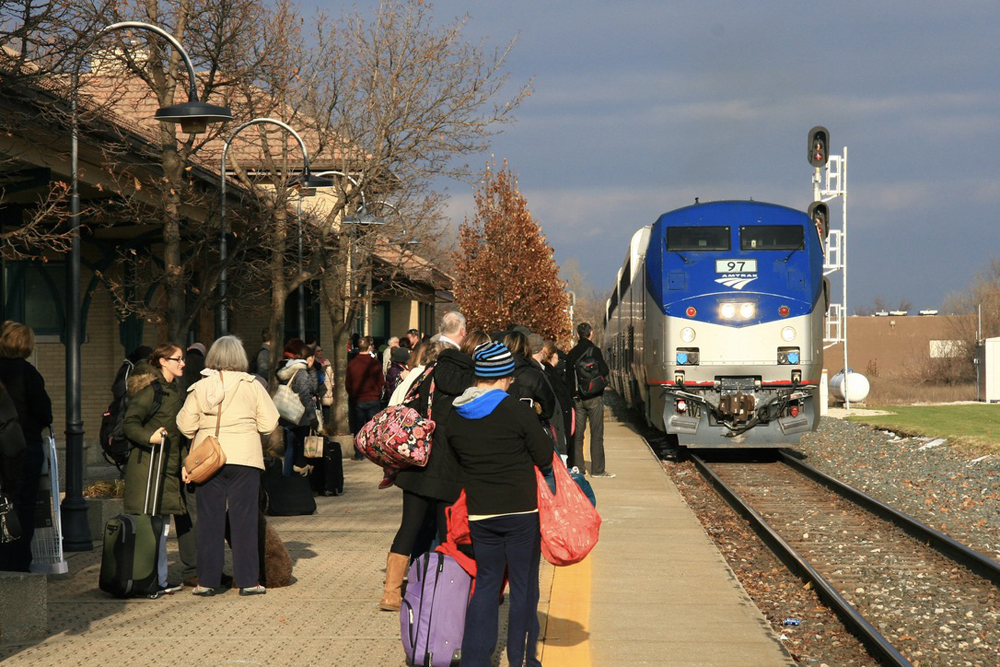
The Pere Marquette Railway’s Pere Marquettes, named after the French missionary and explorer, became the first U.S. postwar streamliners to enter service in 1946 between Detroit and Grand Rapids, Mich. The railroad’s 1947 absorption into the Chesapeake & Ohio Railway paved the way for the fleet name to include a Chicago-Grand Rapids daytime extension. However, all C&O Michigan trains were terminated on May 1, 1971. It wouldn’t be until Aug. 4, 1984, when Amtrak and the Michigan Department of Transportation resurrected the Pere Marquette name for its Chicago-Grand Rapids train on a route that now switches from CSX to NS at Porter, Ind., instead of traversing ex-C&O rails into the Windy City. The original Detroit-Grand Rapids service never returned.
San Joaquins
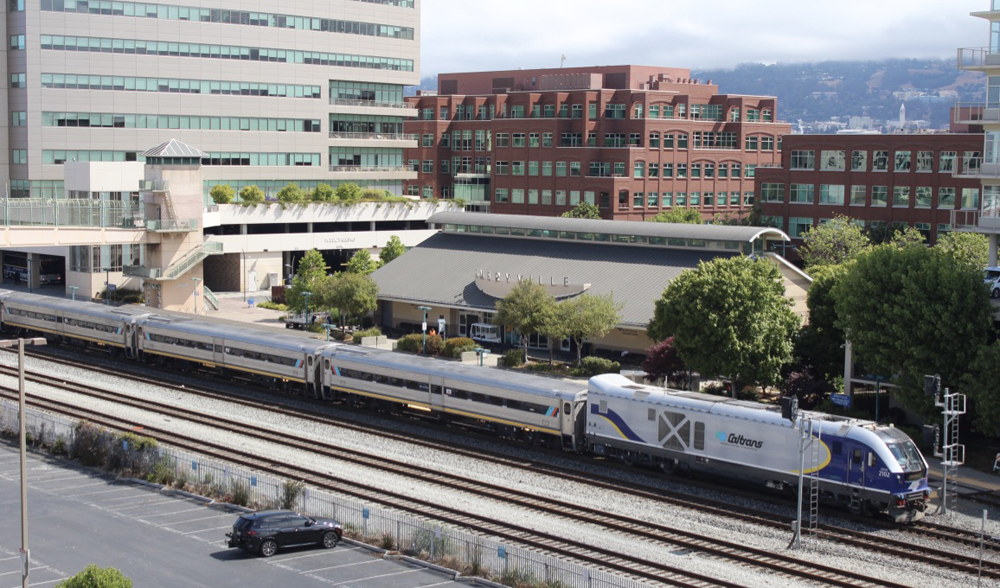
Originated as the San Joaquin Flyer by the Southern Pacific in 1927, the heavyweight San Joaquin traversed its namesake California Central Valley between Oakland and Los Angeles via Bakersfield and Tehachapi Pass. Given the streamlined treatment beginning in 1941, the San Joaquin Daylight became one of the last SP daily-scheduled trains until the end of the railroad’s passenger service in 1971.
Amtrak adopted the San Joaquin name in 1974 when it initiated a single round trip between Oakland and Bakersfield only, with connecting buses to Los Angeles and many other southern California points. State funding of more trains commenced in 1979. The route north from Bakersfield, which uses mostly former Santa Fe tracks east of Martinez, Calif., rather than the ex-SP, has grown to five daily San Joaquins round trips to Oakland and one to Sacramento.
Silver Meteor, Silver Star, and Palmetto
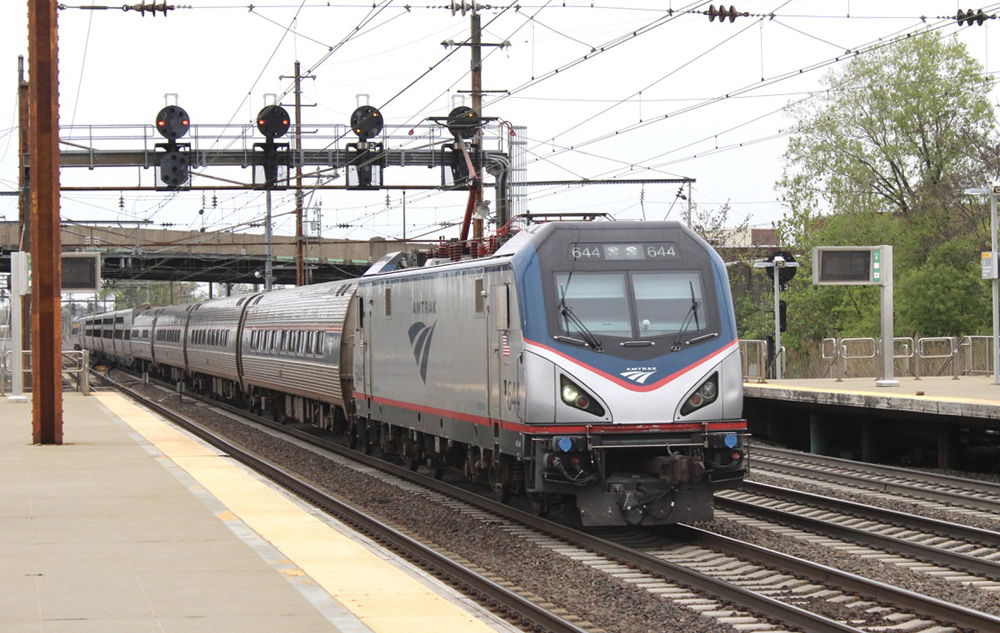
The Seaboard Air Line Railroad and Atlantic Coast Line traditionally competed with separate hotshot passenger trains between New York City and the Southeast. The carousel of name and route changes began spinning when the two railroads merged into Seaboard Coast Line in 1967, and again when Amtrak took over all passenger service in 1971. From that carousel, the Silver Meteor and Silver Star from the Seaboard and Palmetto from the ACL survive today among other names once appropriated.
The New York-Miami Meteor and Star names made a direct transition to Amtrak, but their routing has gyrated since then as tracks hosted by CSX were eliminated and passenger service to and within Florida was shuffled. Palmetto is derived from an overnight Coast Line train from New York that once served Savannah and Augusta, Ga., and Wilmington, N.C., Amtrak revived it as a New York-Savannah daytimer in 1976 with the arrival of the first Amfleet coaches and cafes. It has since reverted to that role after being extended to — and subsequently cut back from — Jacksonville, Tampa, and Miami between 1988 and 2004.
Sunset Limited
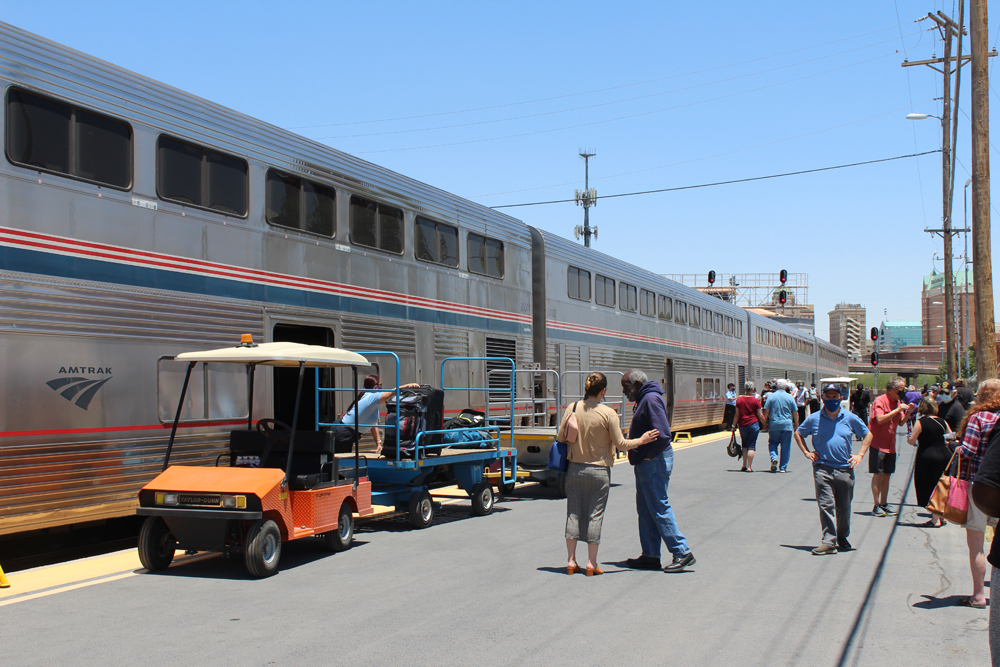
The oldest named train still operating in the U.S. goes to this connection of the Gulf and Pacific coasts. Launched in 1894, the Sunset Limited operates between New Orleans and Los Angeles along the Southern Pacific’s transcontinental Sunset Route. It made a direct transition into Amtrak and retained the railroad’s designation as train Nos. 1 and 2. While most of the original route remains the same today, Phoenix was bypassed in 1996 once successor railroad Union Pacific downgraded a section west of that city which it no longer wished to maintain. The tri-weekly train was extended to Miami in 1993, only to be cut back to New Orleans in 2005 after Amtrak management declined to restore service in the aftermath of Hurricane Katrina.
Texas Eagle
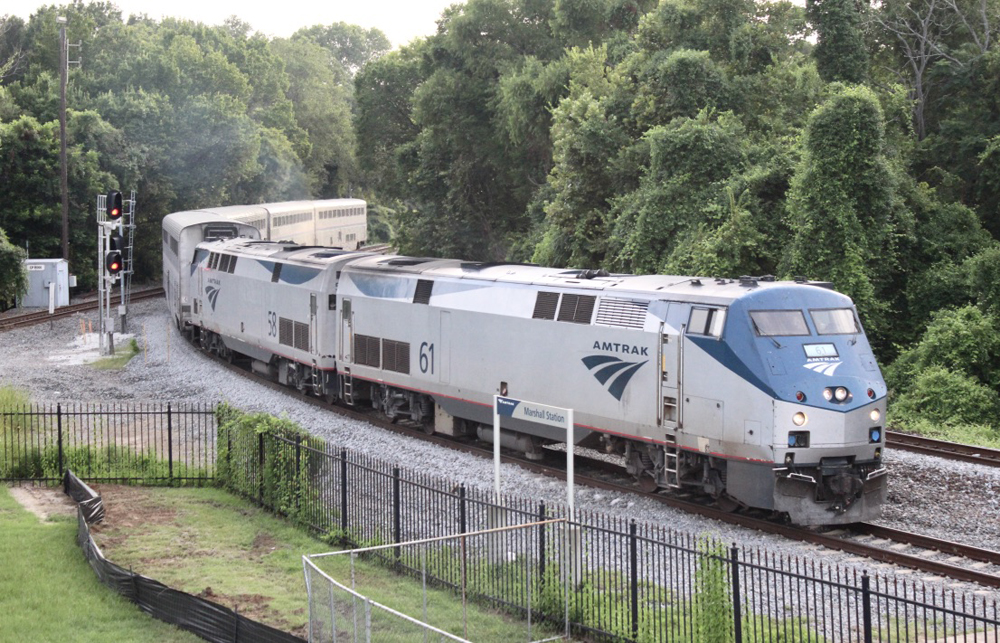
Missouri Pacific branded its post-World War II passenger service as “The Route of the Eagles,” a name applied to the premiere train on most routes. In conjunction with wholly-owned subsidiary Texas & Pacific, its Texas Eagle connected St. Louis with sections to San Antonio, Houston and El Paso, beginning in 1948. Amtrak brought the fleet name back to life in 1981 when it renamed what was then the Chicago-Laredo, Texas Inter American to the Eagle, which terminated at San Antonio. The train then became the Texas Eagle in 1988 when a Dallas-Houston section was added, later subsequently dropped. The MP’s Eagle carried through sleeping cars from the east, though today’s Amtrak version exchanges a Superliner coach and sleeping car at San Antonio to and from Los Angeles on days the Sunset Limited operates.
Wolverine
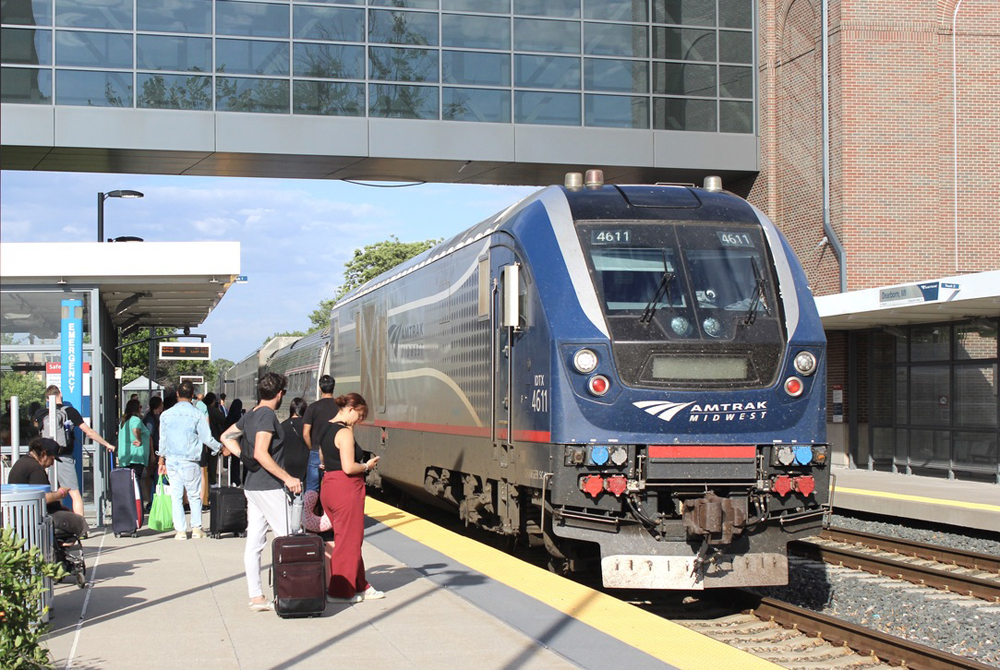
The New York Central’s Wolverine began operating in 1906 between New York and Chicago via Buffalo, southern Ontario, and Detroit. By 1967, the name was jettisoned by Penn Central and through service didn’t survive until 1971. Amtrak revived the name for one of its two daily Chicago-Detroit round trips when it took over service on the surviving segment. Today’s Wolverine is the corridor name for a fleet of three daily Michigan-sponsored sprints between Chicago, Detroit, and Pontiac, Mich., traveling up to 110 mph on much of the route.
Though the extension to Pontiac was added in 1994, the Wolverines don’t stop at Detroit’s recently-revived Michigan Central station as the predecessor once did. Tracks and platforms at the former terminal have been removed and the route to Buffalo no longer exists. However, Amtrak and VIA Rail Canada are working on plans for a Wolverine extension to Toronto.
Honorable Mentions
Some Amtrak train names retain fragments of its predecessors, so it is fitting to grant them brief, yet honorable mentions.
- Southwest Chief: The Santa Fe’s Chicago-Los Angeles Super Chief made the 1971 transition to Amtrak intact with crews and equipment, but deteriorating service prompted the railroad to demand that the passenger carrier stop using its classic “Chief” brand in 1974. Amtrak renamed the train the Southwest Limited, a designation that survived until Santa Fe again permitted the name change to Southwest Chief in 1984, several years after the train had been upgraded with Superliners.
- Coast Starlight: Inspired by the Southern Pacific’s San Francisco-Los Angeles Coast Daylight streamliners, Amtrak’s rendition added an overnight segment north of Oakland to Seattle taking the place of the SP’s overnight Oakland-Portland Cascade. Hence, Starlight was substituted for Daylight.
- Hiawatha Service: Milwaukee Road’s Hiawathas once crisscrossed the Midwest with the Olympian Hiawatha traveling all the way to Seattle. The fleet name has been retained for trains on the busy Chicago-Milwaukee corridor.
- Illinois Zephyr: The state-supported regional is a round trip between Chicago and Quincy, Ill., paying homage to all Zephyrs that zipped along the Burlington’s main line across the Land of Lincoln.
- Lincoln Service: Amtrak retained the Gulf, Mobile, and Ohio’s Chicago-St. Louis Abraham Lincoln in the 1971 takeover. Although the name was intermittently added and dropped during the 1970s, corridor trains became the Lincoln Service fleet when two trips were added in 2006.
- Piedmont: The Southern Railway’s New York-New Orleans Piedmont Limited devolved to a Washington-Atlanta coach train at Amtrak’s inception before the Southern discontinued it. Amtrak and the state of North Carolina revived the name for a single Raleigh-Charlotte round-trip in 1995. Today, four Piedmont round trips and the New York-Charlotte Carolinian provide frequent daily service on the corridor.
Trains Correspondent Bob Johnston assisted with this article.
— Updated Sept. 13, 2024, with correct information on the Auto Train, Lake Shore Limited, Pere Marquette, San Joaquins, Silver Meteor, Silver Star, Palmetto, and Texas Eagle.














Other than Auto Train none of them deserve to use the original names. Get new names so that the old names won’t be continually tarnished.